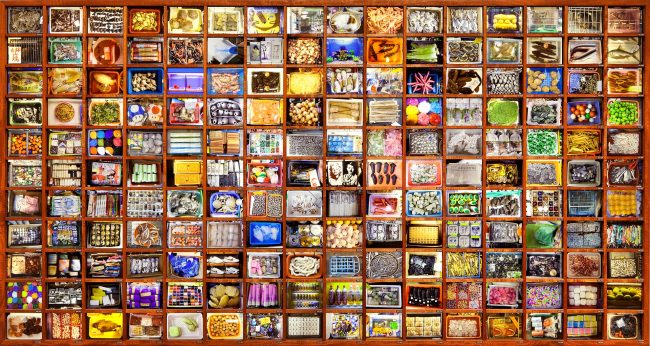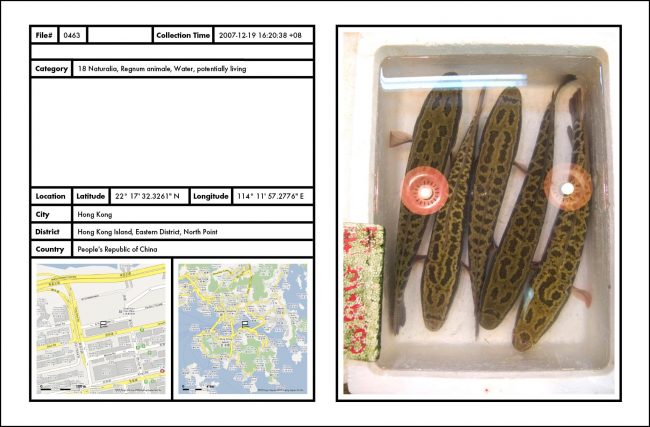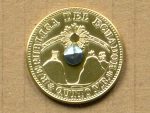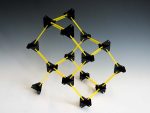Recollection Taxonomy HK01
»RTHK01« (light-box) 2008, wooden light-box, lambda print, laser print, H 93 x W 175 x D 19.5 cm
»RTHK01« (volumes) 2008
, Wood, clothbound books, gold foil, H 31 x W 66 x D 27 cm
The work consists of three phases:
Phase 01: Research trip to Hong Kong, compilation of events, objects, and experiences as a collection of photographs of specimens.
This was undertaken according to quasiscientific measuring and collecting methods. Every specimen was assigned exact temporal and locational data. More than 3,500 specimens were taken over a period of eight weeks.
Phase 02: Entering the data into a database system, classification of the specimens.
Strict assignment of the specimens according to a specially developed, hierarchical, extremely subjective, and arbitrary taxonomic classification system. Incorporation of additional data from public databases.
Phase 03: Evaluation.
Development of the final form of the work:
• Ten volumes featuring 3,230 photos of specimens + data records, arranged strictlyaccording to a special taxonomy.
• Light box with wooden grid, 176 photos of specimens taken from the 100 categories of the classification system.
While Beinroth filtered the information in the first phase in accordance with criteria he developed, in the second and third phase the evaluation of the results took place as an interpretative act of recollection.
In the process, he consciously chose a conceptual approach that clearly shows the development of the dynamic structure of information into something static—right on up to the unchanging object.
The city of Hong Kong as the site of investigation functioned as the defining space that determined the geographical boundaries of the research area. In this regard, Beinroth’s project resembles an expedition or voyage of discovery. Exotic, highly-detailed images and the places they were found constitute the material basis of »Recollection Taxonomy«. However, by revealing the ruptures and subjective creative freedom of his concept in the form of the work’s presentation, Beinroth not only questions man’s need to order and classify but also analyzes the projections of a Western world view that have persisted to this day.
Taxonomy, from Greek »táxis – order« and »nómos – law«, the scientific classification of objects and events in abstract groups. In the domain of natural science the term generally is used for hierarchical structuralized classifications.
“Taxonomy is often undervalued as a glorified form of filing—with each species in its prescribed place in an album; but taxonomy is a fundamental and dynamic science, dedicated to exploring the causes of relationships and similarities among organisms. Classifications are theories about the basis of natural order, not dull catalogues compiled only to avoid chaos.”
Stephen Jay Gould: Wonderful Life: The Burgess Shale and the Nature of History, (p.98)
Selected specimens
































































